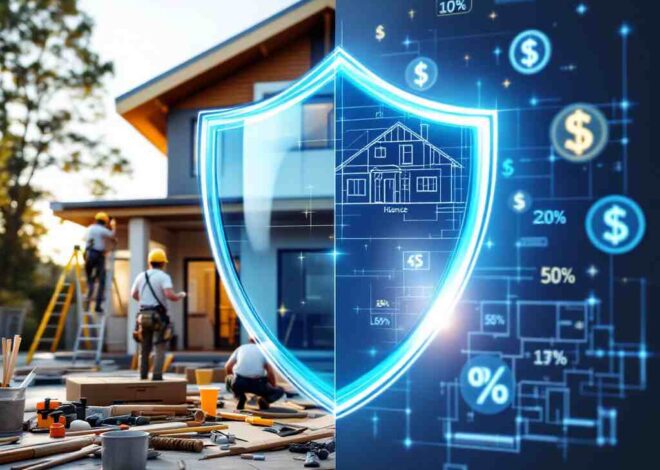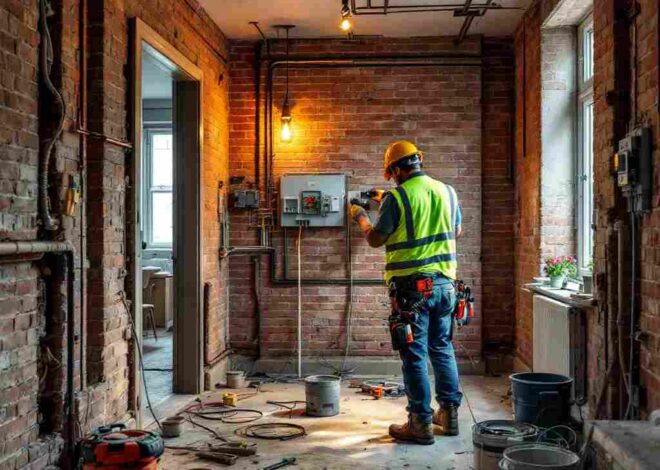
Eco-Friendly Home Improvement: A Comprehensive Guide
Eco-friendly home improvement has become increasingly popular as more homeowners realize the importance of sustainability. When done thoughtfully, home upgrades and renovations can reduce your environmental impact and lower utility bills. This comprehensive guide covers the full range of eco-friendly home improvement ideas to help you make your space greener.
Embracing sustainability in home improvement projects allows us to reduce waste, conserve resources, and create healthier indoor environments. While upfront costs may be higher for some green upgrades, they pay off over time through energy savings and other benefits. Beyond cost savings, eco-friendly home improvement enables us to reduce our carbon footprint and environmental impact.
What is Eco-Friendly Home Improvement?
Eco-friendly home improvement considers environmental sustainability in all upgrade and renovation projects. The goal is to implement changes that reduce energy and water consumption, use sustainable and non-toxic materials, and minimize waste.
Some key principles of eco-friendly home improvement include:
- Energy efficiency – Upgrades like insulation and HVAC improvements to optimize energy use
- Water conservation – Installation of low-flow fixtures, rainwater harvesting, drought-tolerant landscaping
- Renewable energy – Integration of solar panels, wind turbines, geothermal systems
- Sustainable materials – Use of recycled, reclaimed, and non-toxic building materials
- Waste reduction – Strategies like recycling, composting, and deconstruction over demolition
Energy Efficiency Upgrades
Improving your home’s energy efficiency is one of the most impactful steps for eco-friendly home improvement. Here are some of the top upgrades to consider:
Insulation Improvements
Proper insulation is key for minimizing heat loss/gain and reducing energy consumption. Recommended insulation levels vary by climate, but some upgrades to consider include:
- Attic insulation – Most heat loss occurs through the attic, so ensure at least R-38 insulation
- Wall insulation – Upgrade to R-13 batt or blown-in insulation
- Basement/crawl space insulation – Seal and insulate floors over unheated spaces
Window Replacements
Old and inefficient windows can be a major source of wasted energy. Replacing them with new energy-efficient models can significantly reduce heating and cooling costs. Look for low-E coated windows with an R-value of at least 2.5.
HVAC System Upgrades
An outdated or improperly sized HVAC system wastes energy and provides subpar comfort. Consider upgrading to a high-efficiency system like a heat pump or geothermal heat pump. Also, remember to replace filters and schedule maintenance regularly.
LED Lighting Retrofits
Replacing old bulbs with LEDs slashes lighting energy use by 75% or more. LEDs also last 25+ years with no decline in efficiency or brightness. Retrofit kits make conversion easy.
Water Conservation Measures
With droughts becoming more frequent, water-saving home improvements are crucial for environmental and financial sustainability. Options include:
Low-Flow Plumbing Fixtures
Installing low-flow showerheads, faucets, and toilets can reduce indoor water use by 25-60%. Look for the EPA’s WaterSense label when choosing fixtures.
Rainwater Harvesting Systems
Capturing rainwater reduces runoff and provides a free source of irrigation and non-potable water. A simple rain barrel can save 1,300+ gallons per year. Larger cistern systems offer even more benefits.
Drought-Tolerant Landscaping
Replacing water-hungry grass lawns with native plants and xeriscaping techniques can dramatically cut outdoor water use. Group plants by water needs for easier water-efficient irrigation.
You may also read (importance benefits gutter cleaning)
Renewable Energy Generation
Generating your own clean energy through renewable systems is a major way to reduce your carbon footprint. Options include:
Solar Panel Installation
Solar PV systems convert sunlight into electricity to power your home. Costs have dropped significantly in recent years, and federal tax credits offset 30% of system costs.
Wind Turbine Integration
Small wind turbines can supplement a solar PV system, especially in windy areas. The key is proper turbine sizing and siting based on your location’s wind speeds.
Geothermal Heat Pump Systems
Geothermal systems use underground temperatures to heat and cool homes very efficiently. While expensive upfront, the energy savings often make up for the cost over time.
Sustainable Building Materials
Choosing eco-friendly and non-toxic building materials keeps harmful chemicals out of your home. Some great options include:
Reclaimed and Recycled Materials
Using reclaimed wood, recycled metal and plastic, and other salvaged building materials reduces waste and environmental impact. Reclaimed wood offers unique character.
Bamboo and Cork Flooring
These rapidly renewable materials make excellent hardwood flooring alternatives. Look for FSC-certified sources. Cork is naturally waterproof and shock-absorbent.
Natural Paints and Finishes
Milk-based, clay-based, and plant-based paints avoid VOCs and other toxins found in conventional options. Linseed and citrus oil finishes are also great natural alternatives.
Waste Reduction Strategies
Finally, adopt waste-minimizing habits through strategies like:
Composting Systems
Composting kitchen scraps and yard waste reduces landfill contributions while creating nutrient-rich soil amendments. Many compact systems are available.
Recycling Programs
Consult your local recycling guidelines to ensure you’re recycling all accepted materials. Set up bins and signage to make proper recycling easy for everyone.
Deconstruction vs. Demolition
When removing old structures and materials, deconstruct vs. demolish them to salvage building components for reuse. The ReUse People offer deconstruction services.
Conclusion
Eco-friendly home improvement encompasses a wide range of projects and practices to reduce environmental impact. The ideas covered in this guide provide a great starting point to move towards sustainability. Every change, no matter how small, makes a meaningful difference. Implementing these green upgrades benefits the planet and your household.
You may also read (exterior home painting projects diy or pro)


